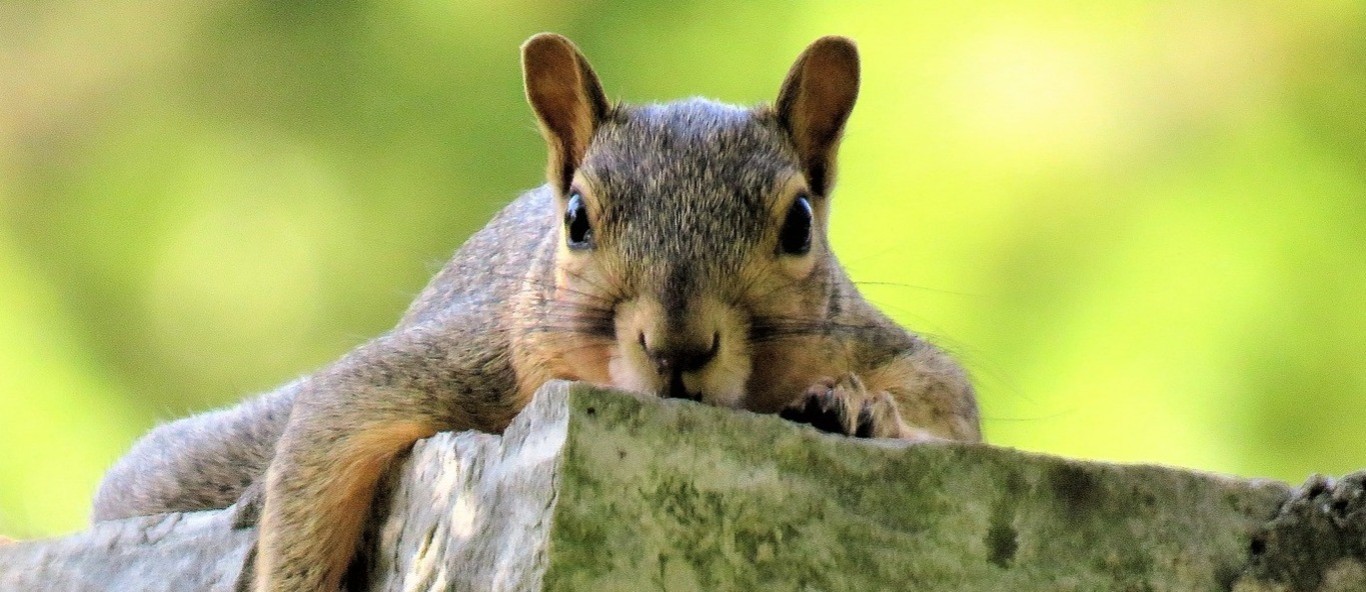Gray Squirrel

Gray Squirrel
Sciurus Carolinensis
-
Wisconsin is home to several species of squirrels including two types of ground squirrels, three types of tree squirrels, and two types of flying squirrels.
-
Gray squirrels on average weigh 16 to 28 ounces and are typically 18 to 21 inches long.
-
Squirrels have whiskers known as vibrissae above and below their eyes, on their nose, and in front of their throat to help sense the world around them.
Population: Gray squirrels have a robust population common throughout Wisconsin and can be found in both rural and urban areas. Gray squirrels can be hunted from September to January with a small game license from the DNR.
Habits: Gray squirrels are most active at dawn and dusk and like to stay close to their home area. Gray squirrels prefer to live in hardwood forests and call a leaf nest (drey) or tree cavity home, however, due to their curiosity and adaptability have learned to live in urban areas and near people. These animals can be very entertaining to watch but can also be a nuisance to those around them. Squirrels will dig up gardens and lawns, eat seeds from bird feeders, and are one of the top causes of power outages in the country as they often like to chew through wires.
Diet: Though they occasionally eat meat and insects, a gray squirrel’s main diet consists of corn, berries, apples, sap, fungi, and their most favorite foods - acorns, nuts, and seeds.
Once acorns or nuts are found, a squirrel will store the food for future use by burying them in scattered places. At times, these hidden treasures are not rediscovered and will germinate and grow in spring.
Mating and Young: Gray squirrels mate when they are a year old and often have two litters in a year, their first being in late March/early April and the second in late July/early August. Baby squirrels, known as kits or kittens, are born blind and without fur. They are very dependent on their mothers until they gain their sight at around six weeks of age.
Information from: https://www.eekwi.org/animals/mammals/gray-squirrel and https://dnr.wi.gov/files/PDF/pubs/wm/wm0573.pdf
To download this info: Click Here

